Fundamentals of Horror
ShortHaus Cinema‘s next featured director is the prolific Ridley Scott. And, seeing as it’s the spookiest month of the year, we simply must talk about his most frightening film: Alien (1979). I’d also like to revisit this month’s featured director, the delightful Alison Maclean, and her short Kitchen Sink (1989). Both films show a mastery of the thriller genre with their claustrophobic spaces and discordant soundscapes. However, what keeps these films in the public’s mind for days, months, and decades is the visceral visuals of body horror and the feeling of discomfort that never quite leaves your body, even after you leave the film.
ShortHaus meets next on Tuesday, November 7, at 7 p.m. in Meeting Room C. Join us and let’s discuss our favorite Ridley Scott films!
As frequently voiced by Ash and John of the Horror Vanguard podcast: “Horror wants to do things to your body.”
Alien and Kitchen Sink are both built on the simple, reliable framework of a haunted house. When developing the script, Alison Maclean had one driving idea: it had to be “something that happens to a woman, alone, in a house.”
Ridley Scott, too, in his commentary for Alien: Covenant (2017), acknowledges that his original plot for Alien is just a simple haunting.
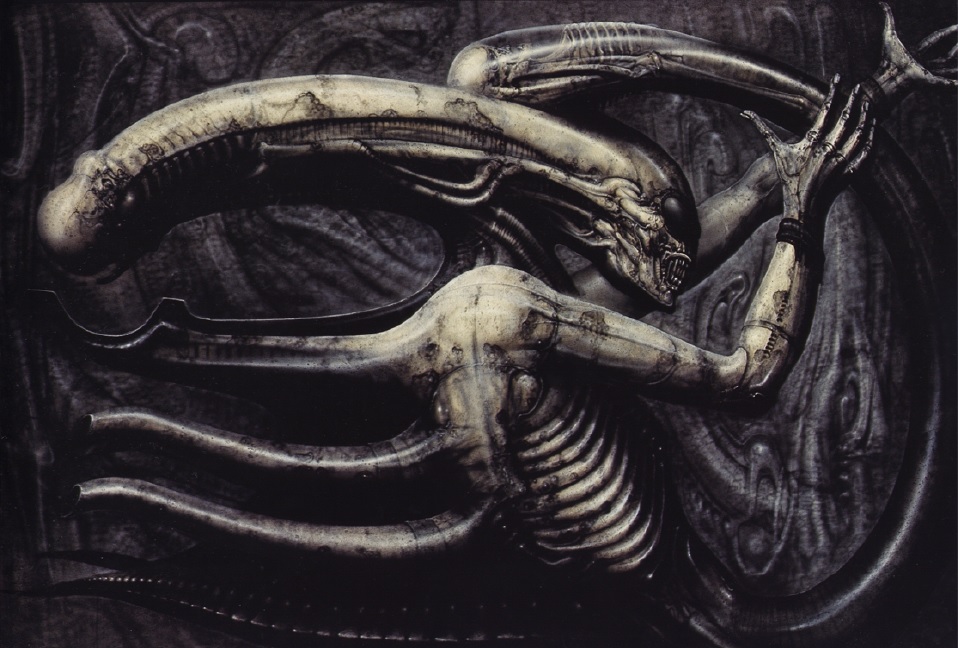
drawing from Necronomicon, H. R. Giger
“[T]hat idea of the old dark house and people are going to die, which is very simplistic… but that’s what mine was. Mine was the old dark house with seven people in there.” Only the ingenuity and the beauty of H.R. Giger’s monster brought it beyond. Within familiar territory, these directors are able to explore the nature of their beasts.
Uncannily Mundane
Maclean’s short film opens with a woman cleaning her sink when a loose hair left in the drain transforms into an umbilical cord. The mundane becomes laborious as she tugs and pulls until a small, hairy, fetus-like creature bursts from the bowels of her sink. It’s filthy and horrifying. Her first impulse is to toss the lifeless creature into the trash and be done with it.
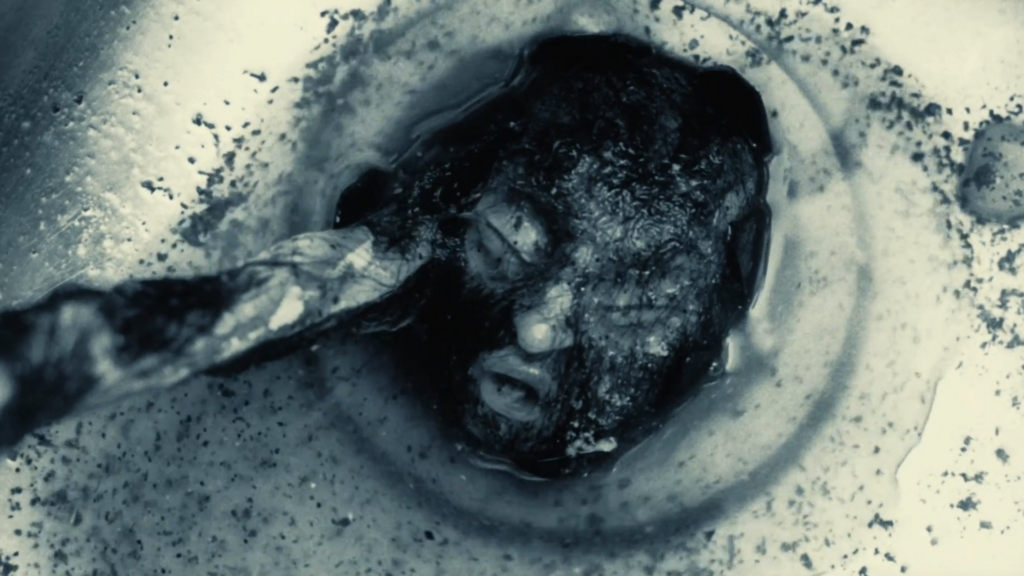
The Beast from Kitchen Sink
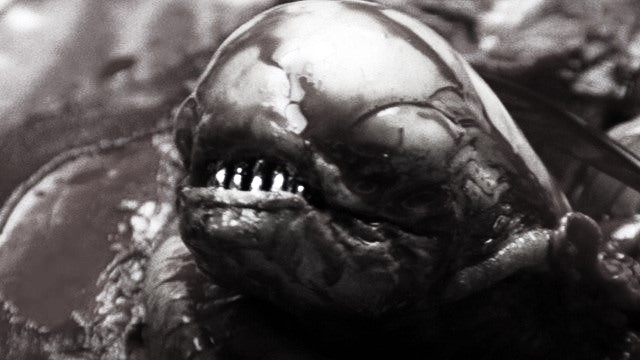
Chestburster from Alien (desaturated)
Alien’s birth begins in a similar way, as we’re lulled into a false sense of security.
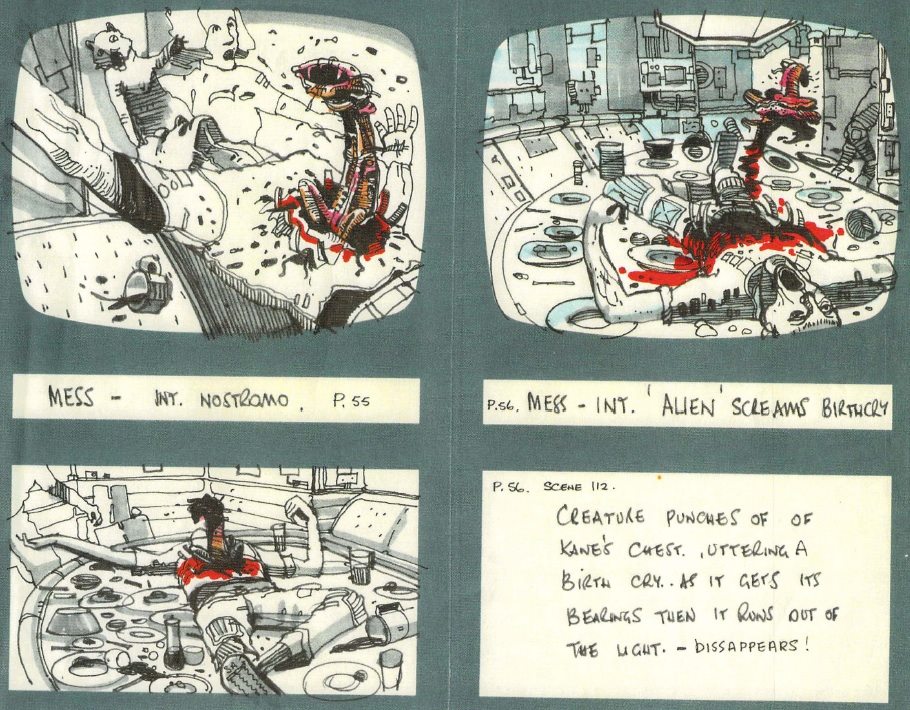
Chestburster storyboards, Ridley Scott
For a second, it seems Kane might be okay, despite the whole facehugger thing wrapped around his head an hour earlier. He’s laughing with his crewmates and eating, making jokes about the terrible food. Of course, within minutes, we’re witness to one of the most iconic horror scenes as the young alien bursts out of his chest.
These scenes feel so invasive because the horror interrupts such a banal part of our lives when our guards are down, and we have no chance to defend ourselves. We’re forcibly subjected to the perversion of conception and birth.
Metamorphosis
“The story was about metamorphosis, so it was like a metaphor that kept changing – it was birth, and garbage… it just kept changing through all the different stages of that creature’s evolution, and of her relationship with him.”
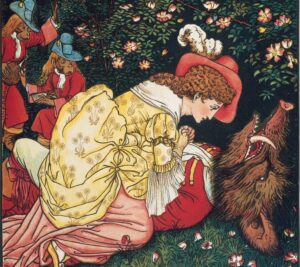
Beauty and the Beast, Walter Crane
Alison Maclean cites many references for Kitchen Sink: “fairy tales and myths like the Frankenstein story or Pygmalion or Beauty and the Beast.” From these pieces, we get a monster. The hairy Beast himself seems to have grown from long-discarded hairs and daily detritus, knotted and clogging the titular sink. He is rot come to life, an assemblage of cast-off parts.
When our nameless beauty decides to bathe the small thing, a metamorphosis occurs. She throws it in the tub and turns on the tap, but gets interrupted by an unexpected phone call. Behind her, we see a bit of foreshadowing in a small poster of King Kong. At the same time, the small rotten thing from the drain expands like a sea monkey in the overflowing tub. Faced with the body of a man, she continues the metamorphosis when she decides to barber the Beast. She sculpts him anew and falls in love, just as Pygmalion fell for his own sculpted creation.
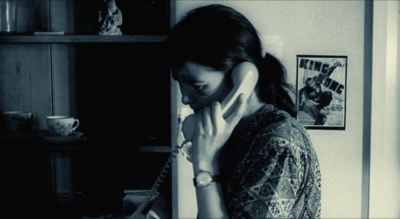
Beauty takes a call
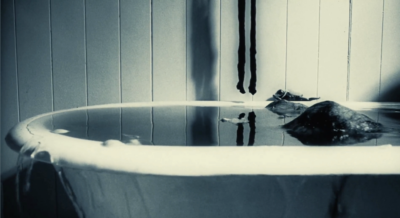
the Beast evolves, knees break the surface
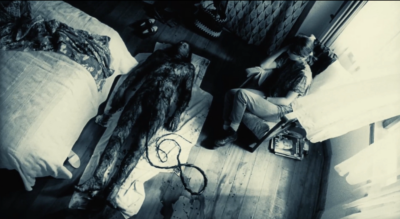
Beauty and the Beast
Alien follows a similar, but much more violent metamorphosis. There is no Pygmalion love for this Beast, except perhaps from the AI that admires it and ensures its survival. The facehugger attacks Kane, penetrating him in a not-so-immaculate conception. His body is violated and then violated again when he’s forced to birth the new creature from his chest. The visuals alone are haunting, but the idea of having your body invaded in such a gruesome way is what sticks with you. You feel it in your throat, being suffocated from the tendril within and the tail without, wrapped tightly around your neck. Your chest aches as Kane’s explodes in vivid red. Each subsequent death elicits new terrors as the Xenomorph’s destructive biology reveals itself. Every time that mouth unhinges and that tongue punches a hole into a new victim, I feel it in my gut.
Monsters Inside
What’s really unsettling is what these films reveal about ourselves. Something so uncannily human can still be seen as nothing but trash until it’s groomed and perfectly human-like. Even then, one stray hair out of place could mean death. When our nameless woman finally kisses our clean-shaven man, she can’t help but be distracted by a lone follicle hiding at the back of his neck. She can’t help but to pluck. But it doesn’t pluck, it pulls, and we watch him experience a terrible pain as this new umbilical cord completely unravels him. And we can feel it, a sickening feeling at the back of our neck as we see ourselves mirrored back. As with King Kong, “it was beauty killed the beast.”
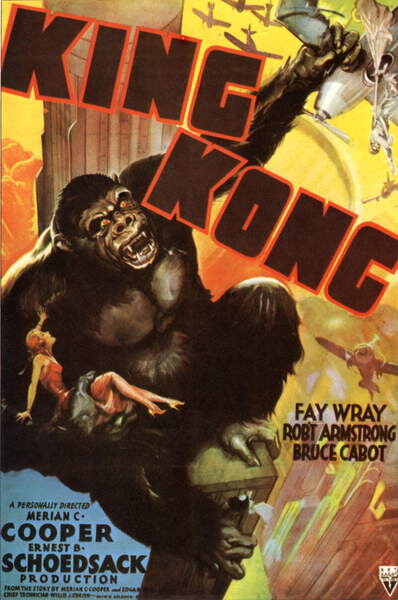
poster for King Kong (1933)
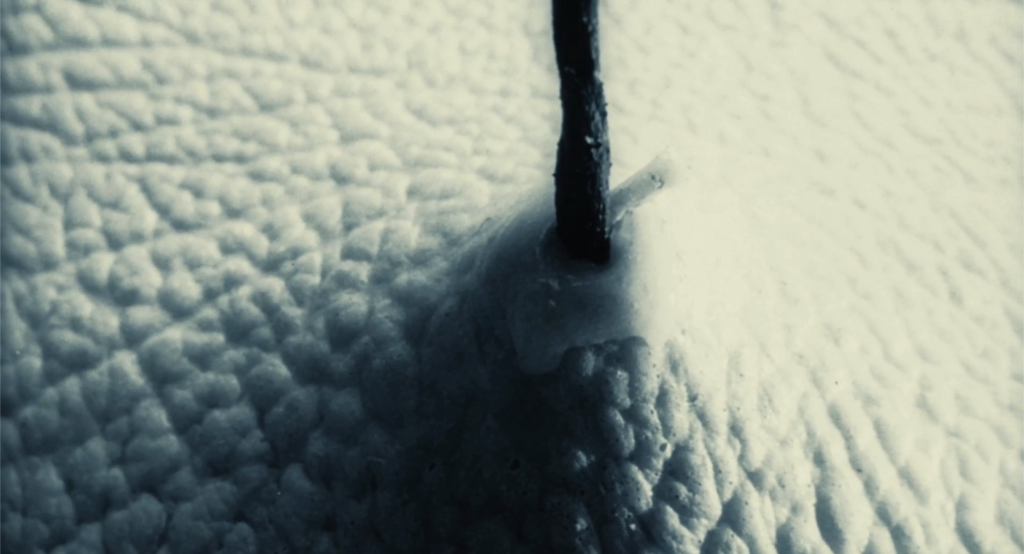
the unraveling hair
These directors show us not what is alien, but what we perceive as alien. Hair grows. That’s natural. As frightening as the Xenomorph appears to us, so much of its design is based on real-life examples: parasitic wasps, deep sea creatures and life forms that live in near inhospitable regions with volcanic activity.
Even its exponential growth is explained away by Scott with a comparison to desert flora, dormant until the rain finally comes, and the next day the landscape is covered in blooms. Ultimately, they’re just animals fighting for survival like any other.
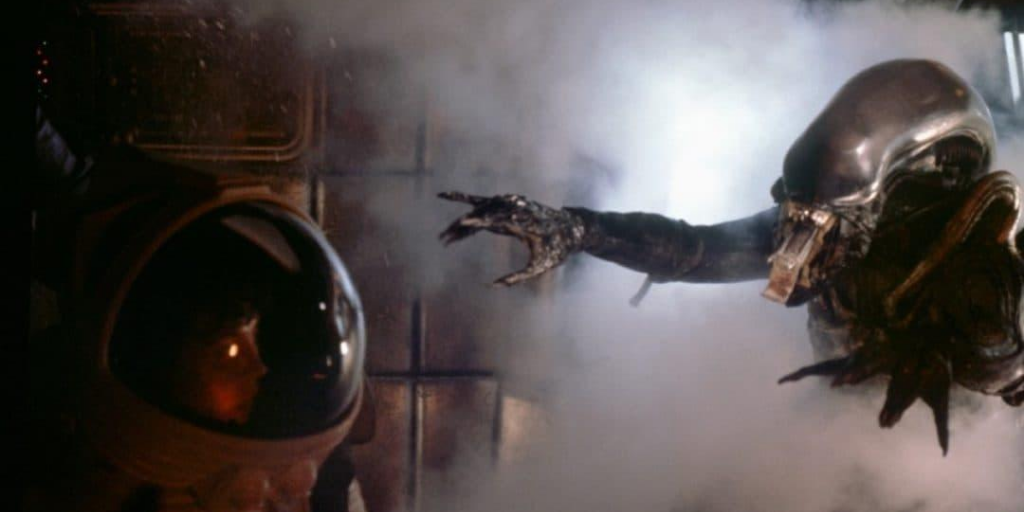
the Xenomorph fights for survival, one last time
ShortHaus meets next on Tuesday, November 7, at 7 p.m. in Meeting Room C. Join us and let’s discuss our favorite Ridley Scott films!
Ridley Scott’s films are available for streaming on Kanopy and Hoopla, along with a documentary on the making of Alien. Our DVD and Blu-ray collection also offers many physical copies of Scott’s work. Happy watching!
